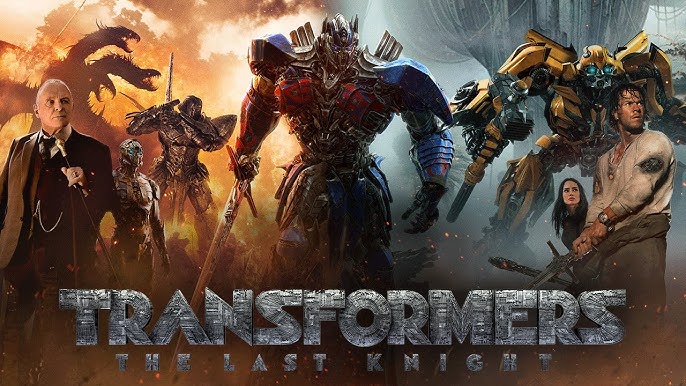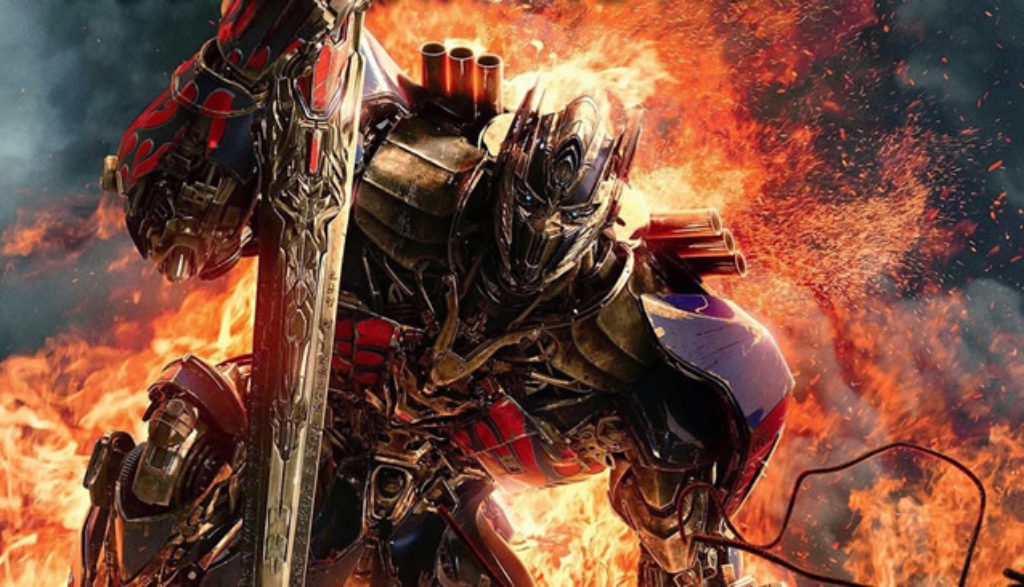Transformers: The Last Knight (2017)

Review of Transformers: The Last Knight (2017)
Transformers: The Last Knight (2017), directed by Michael Bay, is the fifth installment in the live-action Transformers franchise. Featuring Mark Wahlberg, Anthony Hopkins, and Laura Haddock, the film continues the saga of the Autobots and Decepticons, delving into the hidden history of Transformers on Earth. With its signature Bay-style action, sweeping visual effects, and convoluted storyline, the film attempts to expand the mythology of the franchise but struggles with coherence and character depth.
While visually stunning and packed with explosive action, The Last Knight received mixed-to-negative reviews, with criticism aimed at its overcomplicated plot and lack of emotional resonance. However, it remains a spectacle-driven experience for fans of the franchise.
Plot Overview:
The story begins with Optimus Prime (voiced by Peter Cullen) having left Earth in search of his creator. Meanwhile, humanity is at odds with Transformers, and the planet is embroiled in chaos. Cade Yeager (Mark Wahlberg), a fugitive inventor, is protecting Autobots in hiding when he discovers a mysterious talisman connected to an ancient secret.
The film reveals that Transformers have been a part of Earth’s history for centuries, including their involvement with King Arthur and Merlin (Stanley Tucci in a comedic cameo). Sir Edmund Burton (Anthony Hopkins), a historian and guardian of the Transformers’ legacy, explains that Earth is actually “Unicron,” a dormant enemy of Cybertron. To save Earth and Cybertron, Cade teams up with Vivian Wembley (Laura Haddock), a professor and descendant of Merlin, who holds the key to unlocking the ancient power of the Transformers.
As Optimus Prime is corrupted by Quintessa, the supposed creator of Cybertron, and turns against Earth, the Autobots and their human allies must unite to stop a planet-destroying collision between Cybertron and Earth.
Performances:
- Mark Wahlberg as Cade Yeager: Wahlberg returns as the central human character, bringing his usual charisma and action-hero energy. While Cade’s character is less developed than in Age of Extinction, Wahlberg’s performance is serviceable for the film’s action-heavy focus.
- Anthony Hopkins as Sir Edmund Burton: Hopkins provides a theatrical, eccentric performance as the historian who guides the protagonists through the film’s dense mythology. His character injects moments of humor and gravitas, though the role often feels at odds with the chaotic narrative.
- Laura Haddock as Vivian Wembley: Haddock’s character is positioned as the film’s intellectual and romantic lead, but her role is largely defined by her connection to the plot’s MacGuffin. While Haddock delivers a fine performance, the character lacks depth beyond her historical lineage.
- Isabela Moner as Izabella: Moner portrays a resourceful orphan who forms a bond with the Autobots early in the film. Despite a promising introduction, her role diminishes as the story progresses, leaving her underutilized.
- Peter Cullen as Optimus Prime: Cullen’s iconic voice acting brings gravitas to Optimus Prime, even as the character spends much of the film under Quintessa’s control. Optimus’ eventual redemption arc adds some emotional weight, though it is rushed in execution.
Themes:
- Mythology and Legacy: The Last Knight leans heavily into expanding the Transformers lore, connecting the Autobots and Decepticons to historical events and legendary figures like King Arthur and Merlin. The theme of legacy is explored through Vivian’s lineage and the Autobots’ enduring presence on Earth.
- Unity and Sacrifice: The film emphasizes the importance of unity in the face of existential threats. The collaboration between humans and Autobots to save Earth reinforces the franchise’s recurring message of mutual understanding and teamwork.
- Redemption and Corruption: Optimus Prime’s temporary corruption by Quintessa and his eventual return to his heroic roots highlight themes of redemption. However, the execution feels rushed and lacks the emotional depth to resonate fully.

Cinematic Style:
- Direction and Visual Effects: Michael Bay’s signature style is on full display, with explosive set pieces, sweeping camera movements, and elaborate CGI. The visual effects, particularly in the large-scale battle sequences and the design of Cybertron, are impressive and immersive. However, the sheer volume of action can become overwhelming, detracting from narrative clarity.
- Cinematography: The film’s cinematography by Jonathan Sela features dynamic framing and dramatic angles, enhancing the epic scale of the action. The use of IMAX cameras creates a visually striking experience, though the frequent aspect ratio shifts can be distracting.
- Sound Design and Music: Composer Steve Jablonsky returns with a score that complements the film’s epic tone. The music underscores the grandeur of the battles and emotional moments, while the sound design amplifies the intensity of the action.
Strengths:
- Spectacle: The film excels in delivering high-octane action sequences and stunning visual effects, appealing to fans of blockbuster spectacles.
- Expansive World-Building: The exploration of Transformers’ hidden history adds an intriguing, if convoluted, layer to the franchise’s mythology.
- Anthony Hopkins’ Performance: Hopkins’ eccentric and humorous portrayal of Sir Edmund Burton adds a refreshing element to the chaotic narrative.
Weaknesses:
- Convoluted Plot: The film’s narrative is overly complicated, with too many subplots and lore dumps that detract from the central story.
- Underdeveloped Characters: Many characters, including Izabella and Vivian, lack meaningful arcs, reducing their impact on the story.
- Pacing Issues: The film’s excessive runtime and relentless action leave little room for emotional beats or character development.
- Overreliance on Visuals: While visually impressive, the film prioritizes spectacle over storytelling, resulting in a lack of emotional resonance.

Reception and Legacy:
Transformers: The Last Knight received mixed-to-negative reviews from critics, who praised its visual effects and action sequences but criticized its convoluted plot and lack of character depth. The film underperformed at the box office compared to its predecessors, signaling franchise fatigue and prompting a reimagining of the series with Bumblebee (2018).
Despite its shortcomings, the film remains a guilty pleasure for fans of the franchise, offering over-the-top action and a glimpse into the expanded Transformers mythology. Its ambitious attempt to blend historical legend with sci-fi action demonstrates the franchise’s willingness to experiment, even if the execution falls short.
Final Thoughts:
Transformers: The Last Knight (2017) is a visually spectacular but narratively chaotic entry in the Transformers franchise. While the film boasts impressive action and ambitious world-building, its convoluted plot and underdeveloped characters prevent it from reaching its potential. Fans of the series may enjoy its larger-than-life battles and Michael Bay’s trademark style, but for casual viewers, the film’s lack of focus and emotional depth may prove overwhelming. It’s a flashy, action-packed blockbuster that ultimately prioritizes spectacle over substance.










